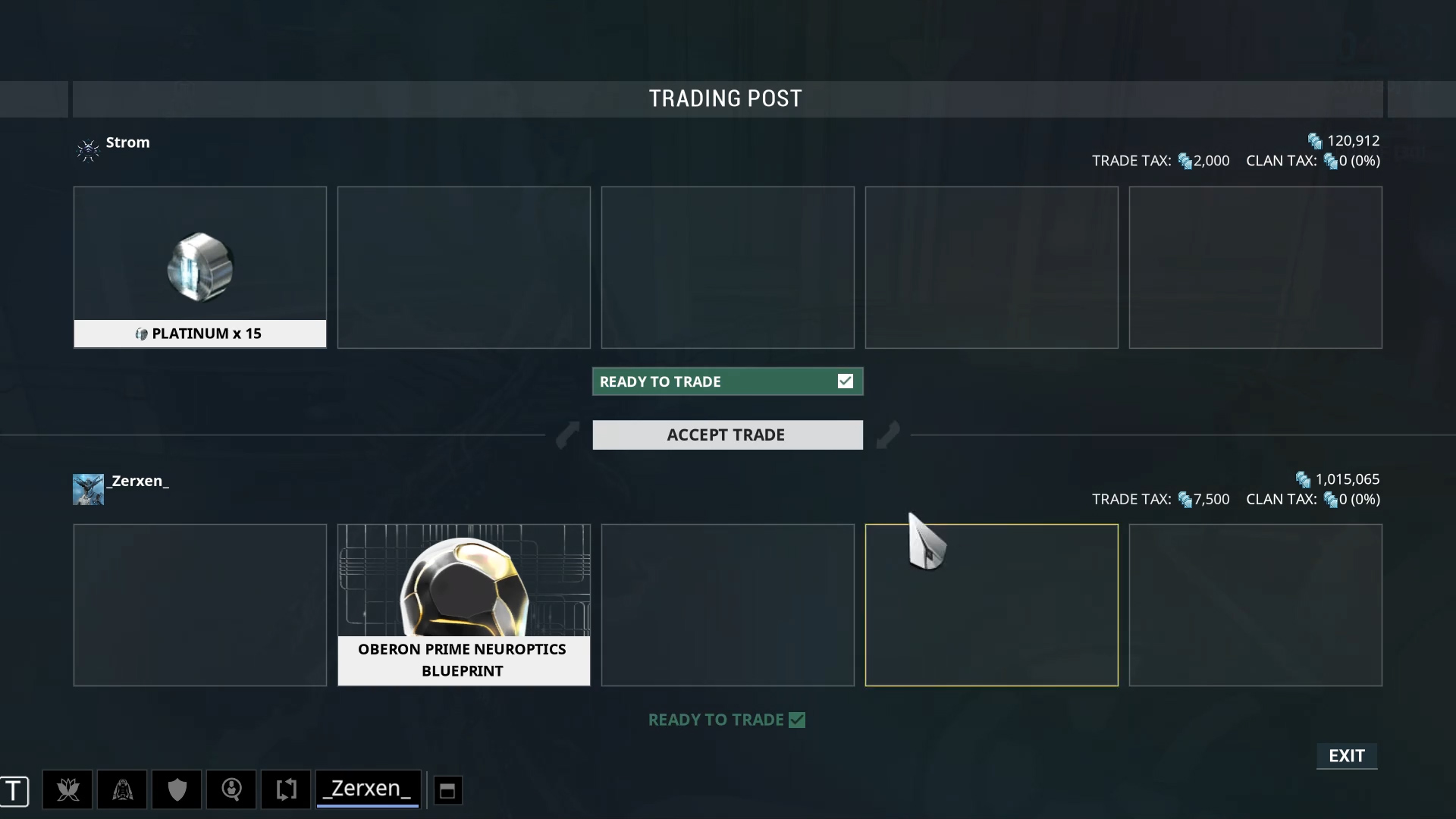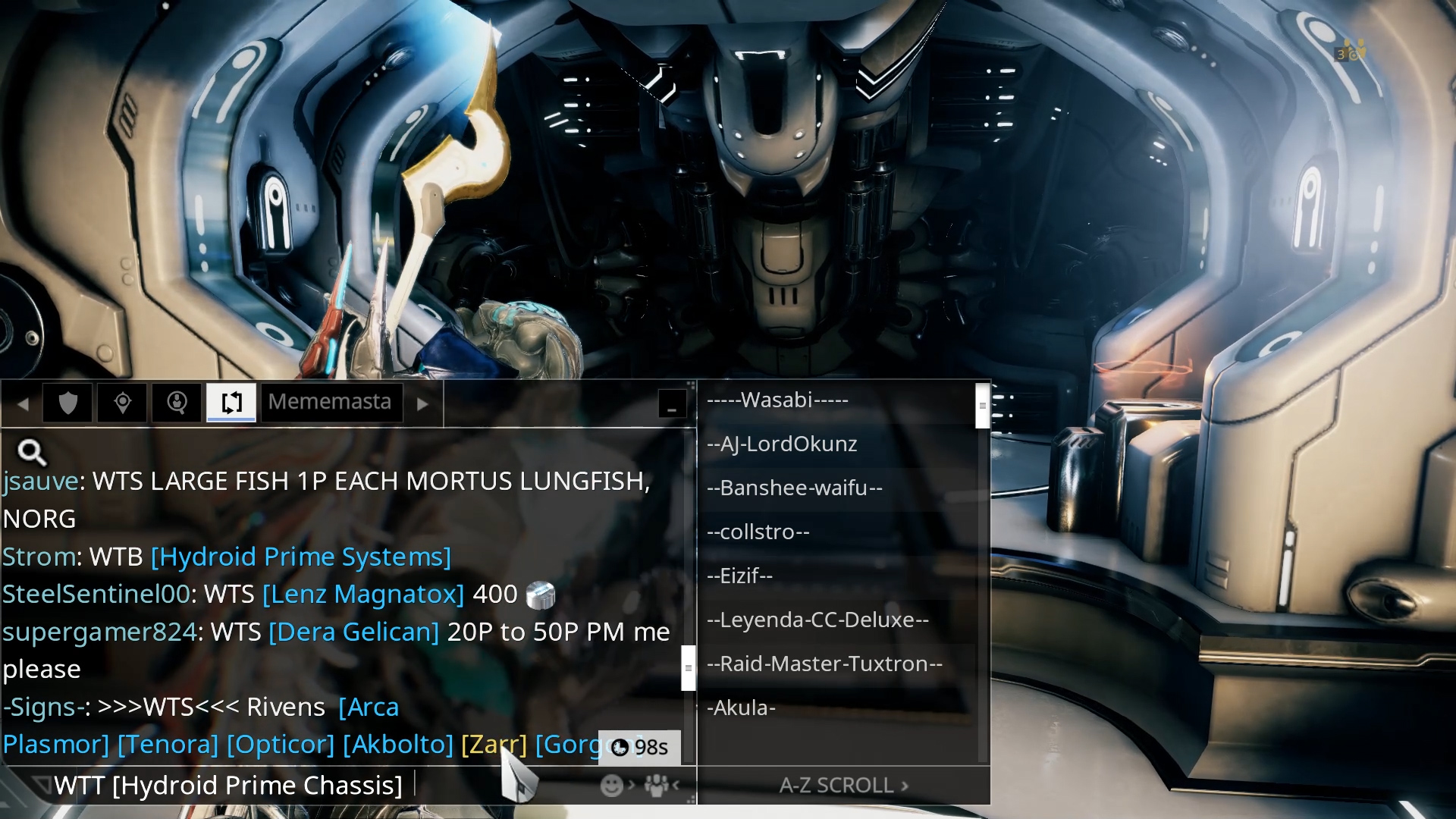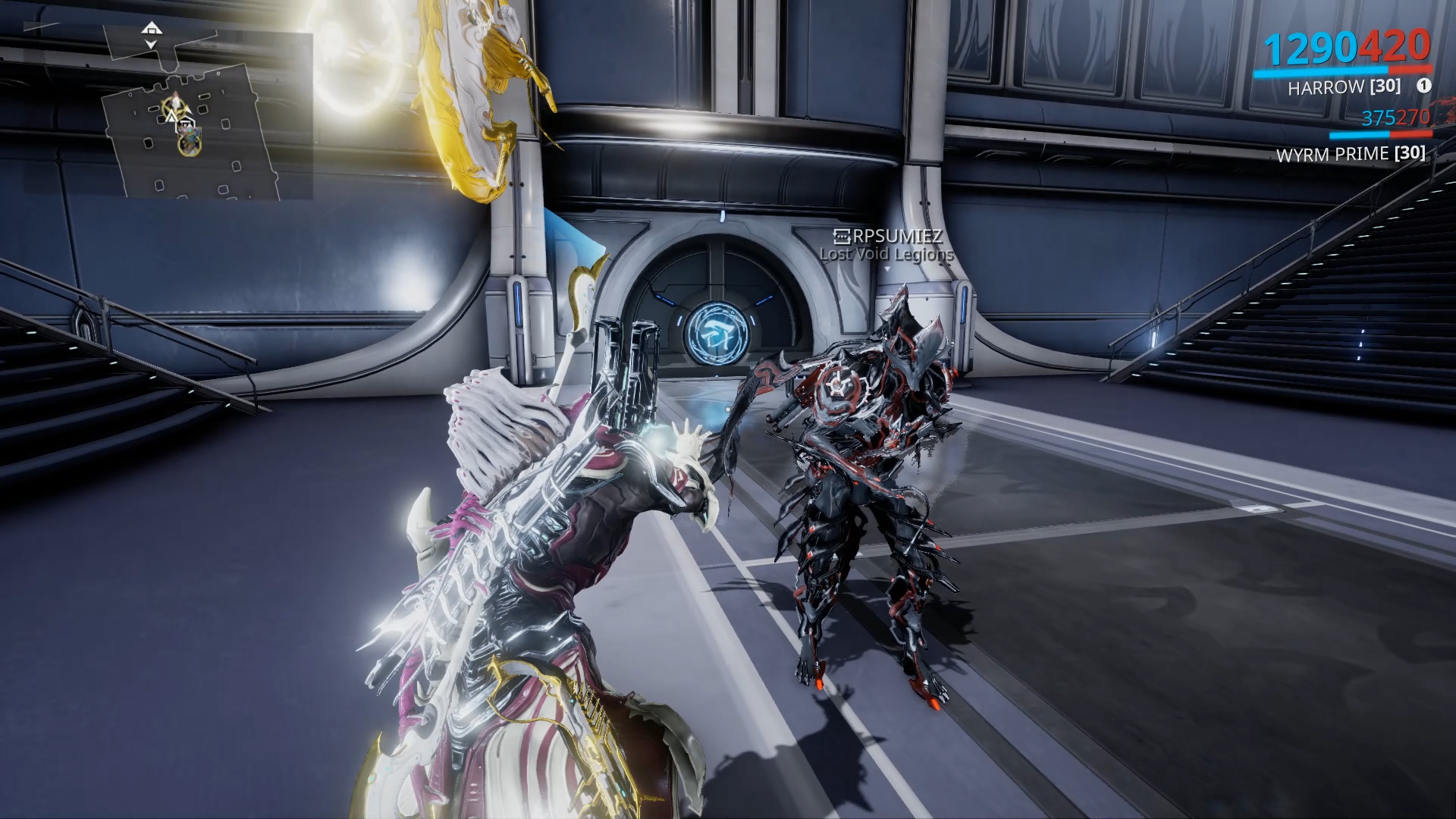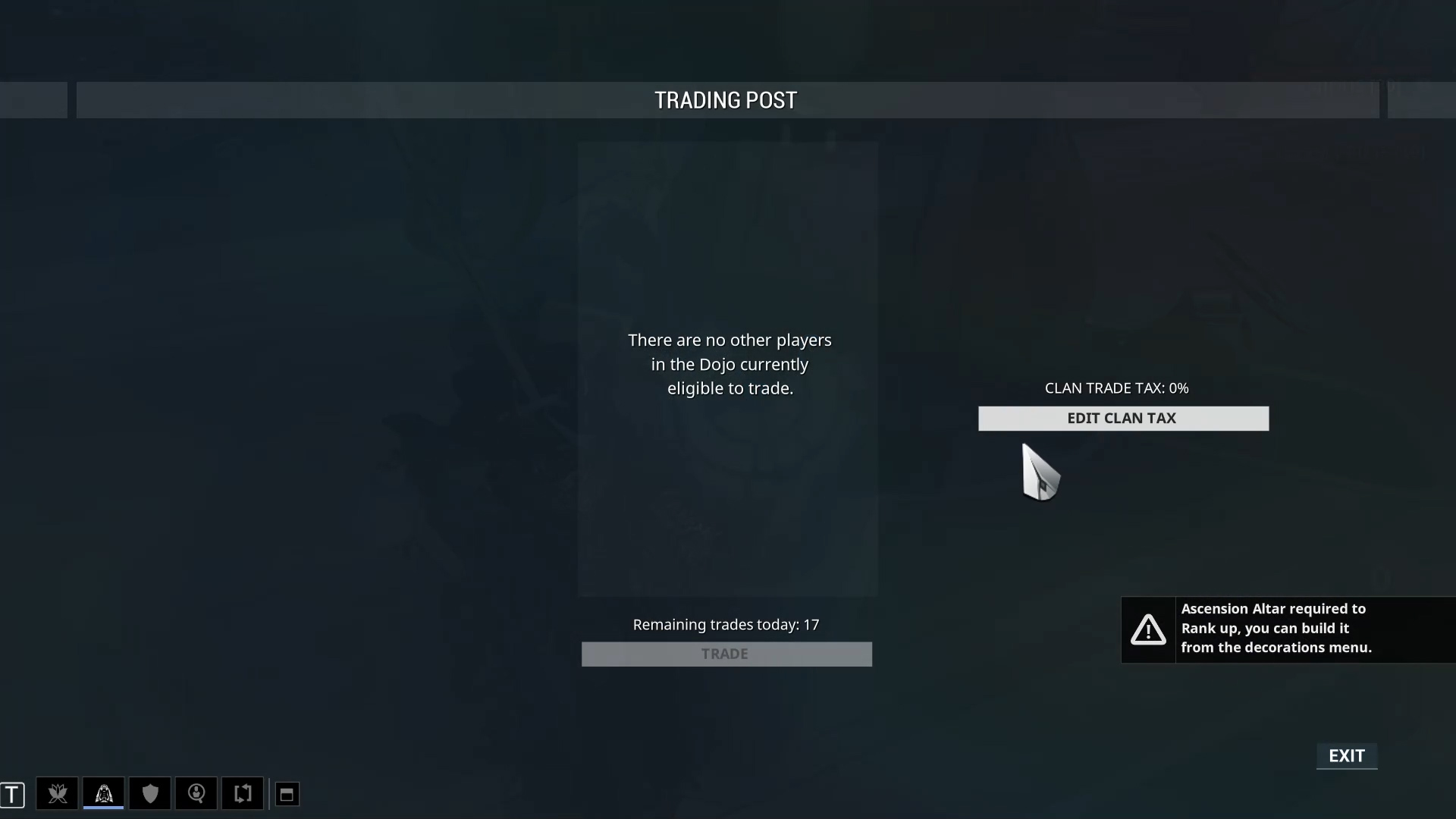Warframe Trading Guide: How to trade, where to find items, and when to barter for the right price
Here's how to trade in Warframe and purchase the items you need

Randomness is a vital, inescapable part of Warframe. Nearly every item in the loot-and-shoot action game is randomly awarded - from finishing missions, killing enemies, or just being in the right place at the right time. This can make it awfully hard to get that last blueprint you need to complete a set, or that one upgrade you desperately want to add to your Warframe or weapon loadout.
Trading between fellow players is possible and takes some of the sting out of that grind. Unfortunately, it can be just as complicated as the rest of Warframe, and that's why we’ve compiled this guide to tell you where, how, and what to barter with your fellow players. Read on, and you'll soon be setting up trades and locking down that key loot you've been after.
What You Need and How to Get It

Obviously, the first thing any prospective trader needs to know is what they want and where to find it. The most immediate place to check is Warframe’s in-game “Trading” channel. It’s one of the default tabs in your text chat visible at the bottom-left of the screen. It’s also where most players looking to move or acquire items immediately start.
The “rules” of trade chat loosely follow those of MMOs like World of Warcraft. The acronyms WTB, WTS, and WTT translate to “want to buy,” “want to sell,” and “want to trade,” respectively. “WTS Hydroid Prime Systems,” for instance, means someone is looking to sell that particular item.
They might also mention a number, usually followed by the letter “p.” This indicates how much of Warframe’s real-money currency, platinum, they’re looking for in exchange. So “WTS Hydroid Prime Systems 50p” means the trader wants at least 50 platinum, or “plat,” for their item.
Platinum is the standard medium of exchange in Warframe. All new users start with a tiny stipend of the stuff, but you need to either barter or spend real-world cash for more.
Of course, the potential buyer and/or seller might not mention a price up front. You may have to haggle with them, so you’ll want to know the average value of what you want to buy (or sell, as the case may be). Players looking for a snapshot of an item’s trade value might ask for a “PC,” or price check, and hope some good Samaritans will clue them in. There’s no guarantee you’ll get a response, however, as the trade channel is typically very busy and there’s a limit to how many messages you can send at a given time. Patience is key.
Out-of-Game Options

One convenient alternative for both price checks and setting up trades is Warframe.Market. The very slick website doesn’t just let players post buy and sell orders - it lets you filter by price, trade items as a set, look only for traders who are in-game, and see useful information about whatever item you’re looking at, like where it drops naturally and how much it’s worth to the vendor Baro Ki’Teer. For more information on him, see our Warframe Mods guide.
There’s no guarantee players will honor their listed price - you’re still dealing with human beings at the end of the day, but that almost never seems to be an issue. There’s nothing forcing you to complete a bad trade, either, after all.
A slower option is to check Warframe’s official “Trading Post” forums. This avenue trades immediacy for specificity, but it’s a great place to find more randomized, esoteric items like Riven Mods and companion animals with specific genes. The downsides are that it’s harder to search and has fewer viewers than the more instantaneous markets.
The Meet-Up Process

Once you know what you want and how to get it, it’s time to set up a meeting. You’ll need to private message the potential trade partner with your intentions - if you found the user in-game, either through trade chat or because you already know them, just select their username in chat and choose “whisper” to message them. If you found their name out-of-game (e.g. through Warframe.Market), you can type “/w username” followed by your message.
The two of you should then join a squad, as if you mean to play a mission together. Instead of starting a mission, however, you can load into either player’s Clan Dojo from the star map. If you’re not part of a clan the other player will have to invite you to theirs. In the unlikely event neither of you has a clan, you can go to the zone called Maroo’s Bazaar on Mars instead.
Dojos are the better option, as every tradable item in Warframe comes with a “trade tax” that requires the game’s basic currency, credits, to complete. Maroo charges more than Dojos by default - clan leaders can set a higher tax on trades at their Dojos, as well, but it’s rare.
Spawning inside a Dojo usually places you in front of a towering trade terminal. From there, you can initiate a trade with anyone else in the area, select the items or platinum you want to exchange, and finally select confirm. That’s it!
The process is similar at Maroo’s Bazar. Except you don’t need to hit up a terminal. Just press your gear button (“Q” on keyboards by default) and select “set up shop” to open yourself to trades. You can also use this method to publicly show off, or search for, potential trade goods. The problem is that Maroo’s Bazaar is instanced - unlike the trade channel, you won’t see everything or show off to everyone, so select the busiest instance you can when loading into the zone.
Limitations and Workarounds

Brand new players can’t actually trade at all, as the feature doesn’t unlock until you reach a “Mastery Rank” of two. This is an account-wide level that you increase by leveling up multiple Warframes and weapons.
From then on you can trade as many times per day equal to your mastery rank. So a rank 10 player can trade 10 times, a rank 15 player 15 times, and so on. Even then you can only trade up to five items per exchange, although the credits tax is usually more of a hindrance than these strange limitations.
Speaking of which, trading can be a real drain on your wallet. The tax is pretty light for Prime parts, void relics, and mods, but can jump as high as one million credits on high-tier items. Platinum also costs 500 credits per unit traded. And since platinum is the most commonly traded “item” in Warframe, the costs add up quickly.
One way to make up the difference is by selling specific Warframe blueprints. Technically you can sell any item in your inventory for credits. It’s just rare that you’ll have anything you want to part with. The big exceptions are Harrow chassis and Oberon blueprints. Both are fairly common drops from killing enemies during regular play. Duplicates serve no purpose besides being sold - especially after you’ve built the frames themselves - and sell for a few thousand credits a pop.
Notice we said you can only sell those blueprints. Normal Warframe components can’t be traded between players, and neither can fully crafted weapons or Prime Warframes, as only their constituent parts and incomplete blueprints are fair game. Crafting resources, Endo, Orokin Catalysts and Reactors, as well as platinum you gained from free promotions, are also off-limits when it comes to trade.
Bear all of this in mind, figure out what items you need and which you can sell off, and you'll be trading like a pro in no time.
Looking for more Warframe? Then check out the reasons Warframe's tough to start, but that's also why it's still so fun.
Weekly digests, tales from the communities you love, and more
Steven is currently the Senior Managing Editor at Fanbyte, but was formerly a freelance journalist with bylines at Ars Technica, PC Gamer, Dorkly, Waypoint, Rock Paper Shotgun, and GamesRadar.


